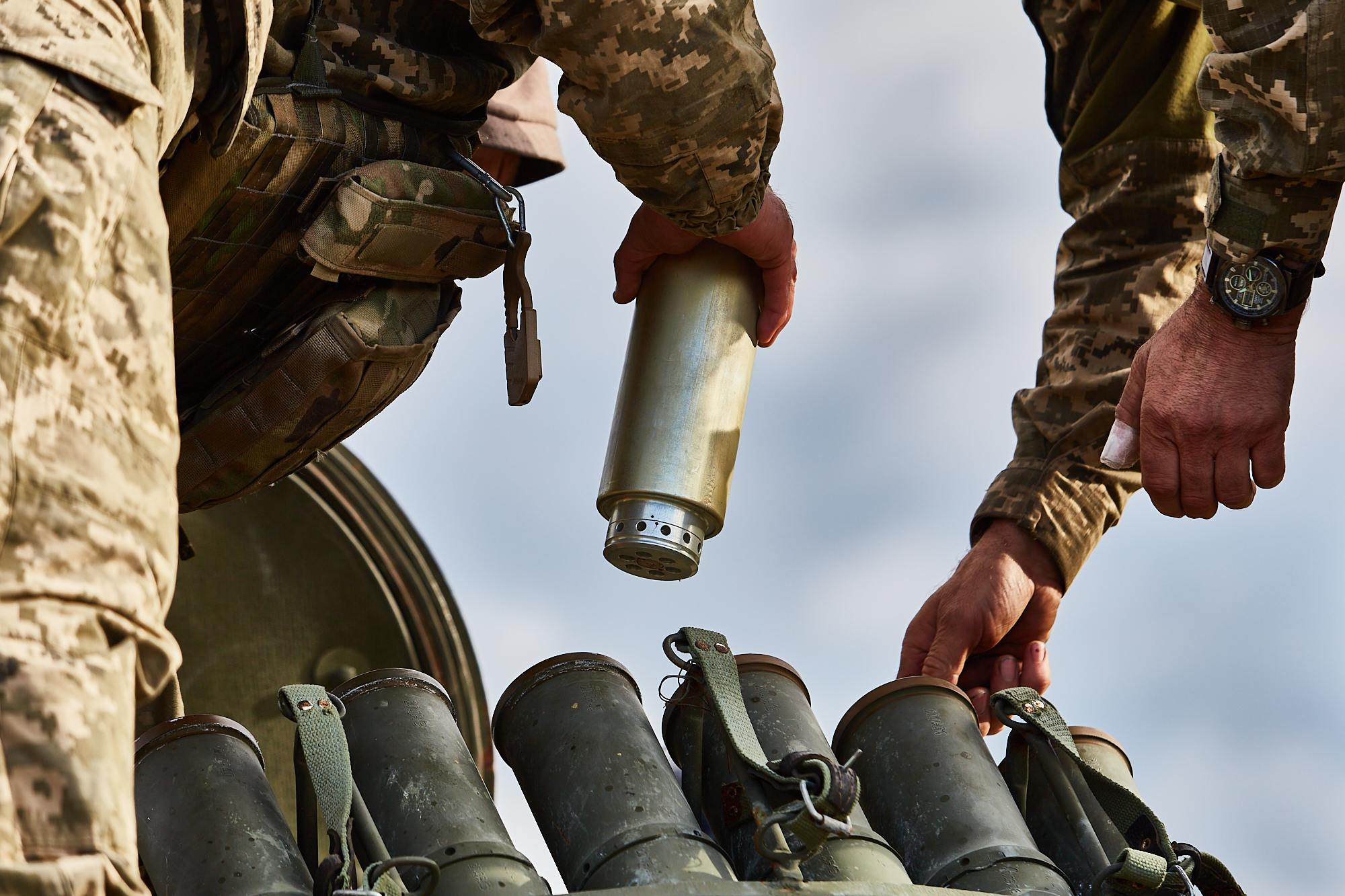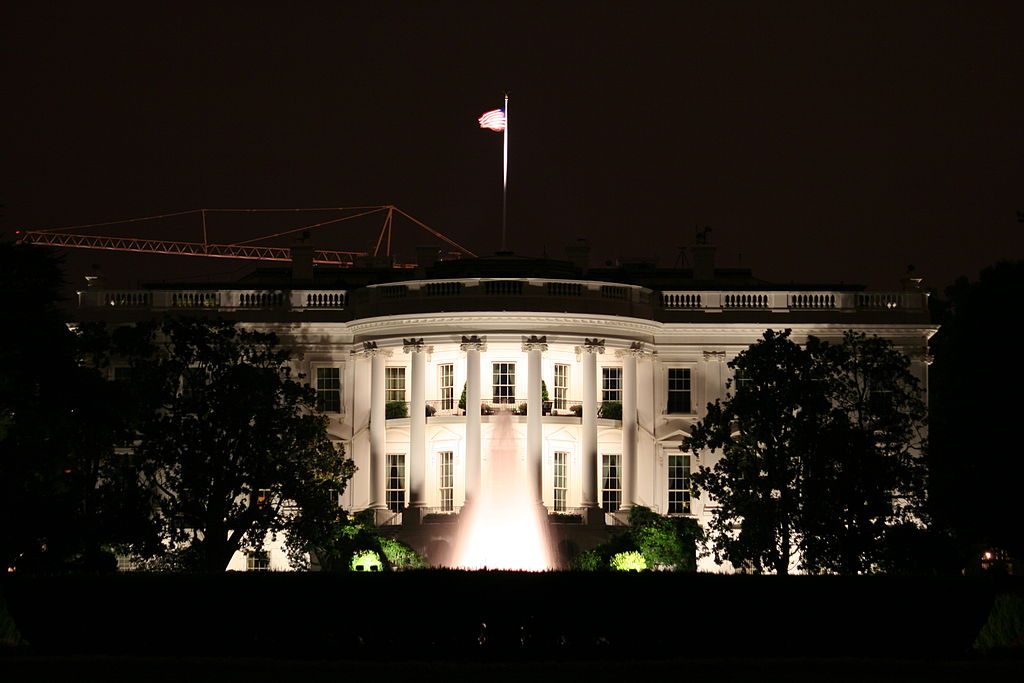Ukraine’s Artillery Shell Shortfall
The price of peace and how Ukraine’s allies have failed to deliver munitions.

Published by The Lawfare Institute
in Cooperation With

The future of U.S. and European military aid to Ukraine has never been more uncertain. These debates have intensified amid a growing realization that the war is likely to last years, due in part to Ukraine’s unsuccessful counteroffensive in the summer and fall of 2023 and Russia’s reported advances earlier this year.
It is in the national security interests of the United States and its European partners to continue to provide Ukraine with the means of winning the war. Failure to do so in a timely fashion risks the fall of Ukraine, an emboldened Russia, and a weakened international rules-based order.
One specific aspect of military aid reflects both Ukraine’s urgent need and its partners’ current failure: the Ukrainian armed forces’ artillery shell shortage.
“When Russian troops advance, and its guns fire, Ukraine does not have enough ammunition to fire back,” U.S. National Security Adviser Jake Sullivan said on March 12. “That’s costing terrain. It’s costing lives. And it’s costing us, the United States and the NATO alliance, strategically.”
The recent fall of Avdiivka offers a case in point. Last month, Ukrainian soldiers withdrew from the town, giving the Russian military their first victory since May 2023 by capturing a town that Ukraine had successfully defended since 2014. This happened primarily because the Ukrainians ran out of ammunition—specifically artillery munitions. Without artillery fire to disperse enemy troop concentrations, destroy enemy artillery systems, and disrupt the attacking forces’ supplies, Ukrainian forces could not hold their positions without incurring unsustainable losses.
Part of the problem is the dated Ukrainian arsenal, which consists mostly of Soviet-era designs of 122 mm and 152 mm caliber artillery. The Ukrainian armed forces have begun to transition to more modern 155 mm artillery—155 mm caliber artillery systems provide longer range, higher rate of fire, greater accuracy, and a greater variety of specialized munitions than the 152 mm systems.
A standard 155 mm munition consists of a fuse, a projectile, propellant, and a primer. They are used in howitzer systems such as the towed howitzer M777, the wheeled self-propelled howitzer Caesar, or the tracked self-propelled howitzer, such as the M109 Paladin or AHS Krab. Munitions come in different variations, for example, with precision guidance like the Excalibur. Ranges vary commonly from 22.5 km to 40 km depending on artillery system and munition type. Ukraine has proved it can fire howitzers with pinpoint accuracy, deploying specialized munitions, paired with drone-assisted fire-control and counter-battery radars that can detect the trajectory of incoming artillery shells and locate their point of origin.
But crucially, artillery relies not only on precise and heavy-hitting power but also on numbers to defeat concentrations of ground forces. It often comes down to a numbers game.
Ukrainian officials stated publicly in March 2023 that it needs 20,000 artillery shells per day for its roughly 300 Western-made artillery systems to support its ground operations effectively. At best they have received enough shells to fire 9,000 per day, but more recently only 2,000. Ukraine is trying to obtain sufficient munitions to fight fire with fire. Reportedly, Ukraine did not produce any artillery munitions before Russia’s invasion. In July 2023, Ukraine produced more mortar and artillery shells than it did in all of 2022. However, starting industrial production from virtually scratch during wartime, while bombarded by missiles and drones, will not suffice, at least in the short and medium terms. The latest reporting suggests that Ukraine will be able to produce 155 mm shells domestically during the second half of 2024.
Since the Cold War, European countries and the United States have progressively scaled down their munitions manufacturing capabilities. As one example, in 2013, Finland was on the brink of shutting down its only gunpowder manufacturing facility, despite its reputation as a model in Europe for robust national defense and military preparedness.
Manufacturing figures for 155 mm munitions illustrate the scale of the problem.
The table below represents the production figures for 155 mm munitions, which cumulatively fall below Ukraine’s current need. To make matters worse, not all of these munitions are headed for Ukraine.
Table 1. 155 mm shell production
(m) denotes monthly rate and (a) denotes annual rate
| Production | ||||
|---|---|---|---|---|
| Manufacturer (nation or company) | 2022, before full-scale invasion | 2023 | 2024 | 2025-2028 |
| United States | 14,000 (m) 168,000 (a) | 14,500-28,000 (m) 174,000-336,000 (a) | 60,000+ (m) 720,000 (a) | 100,000+ (m) 1,200,000+ (a) |
Rheinmetall (Germany, Spain, South Africa, Australia) | ≤100,000 (a) | 400,000 (a) | 700,000 (a) | No data available |
10,000 (a) | No data available | 80,000 (a) | 200,000 (a) | |
CSG (Czechia) | No data available | No data available | 80,000-100,000 (a) | No data available |
Nexter (France, Belgium, Italy) | 60,000 (a) | No data available | 90,000 (a) | 120,000+ (a) |
| Canada | 3,000 (a) | 3,000 (a) | No data available | No data available |
BAE systems (United Kingdom) | No data available | No data available | No data available | 8-fold increase |
The shortfall illustrated by this table is both a consequence of Western support for Ukraine and the result of these countries recognizing the need to bolster their security in light of the demonstrated Russian aggression over the past two years. The munitions expenditure of crisis management, peacekeeping, and counterterrorism operations is a world apart from the conventional war currently being waged.
Considering the dire need and challenges associated with increasing production by opening additional production lines and factories, countries might be tempted to consider lowering quality standards to achieve higher production figures. But, as retired Finnish military officer and current member of parliament Pekka Toveri told the author of this piece, this approach would be counterproductive, likely leading to increased wear-and-tear on gun barrels and decreased accuracy. Ultimately, reducing quality standards would counterintuitively increase munitions expenditure.
It is difficult to estimate the exact munition shortfall based on public data, but the figures in the table above are consistent with warnings given by the chief of defense staff of Canada and the head of NATO’s military council in October 2023. The U.K.’s secretary of defense also rang the alarm on the artillery munition shortfall as early as July 2023. Ukrainian President Volodymyr Zelensky acknowledged as much in a November press conference, when he said that “warehouses are empty” in nations that supply Ukraine with munitions. More recently, at the Munich security conference on Feb. 17, Ukrainian Foreign Minister Dmytro Kuleba said that “all of us need much, much more artillery ammunition.”
A Nammo AS consultation statement from October 2023 estimated that only 5 to 10 percent of current Ukrainian artillery munitions demand can be met in the short term and that it will take 40 years to replenish depleted national munitions stockpiles with current production figures. The figures would still be troubling for Ukraine if it was to receive all of its allies’ artillery munitions production. The situation is reportedly even worse with respect to Soviet-legacy artillery of 122 mm and 152 mm. Artillery systems of these calibers have progressively disappeared from European inventories with few exceptions, such as Finland and Bulgaria, the latter having reopened a production line for 122 mm munitions in early 2023.
In March 2023, as part of its ASAP venture, the European Union set a goal to increase production capacity to 1 million shells per year to Ukraine. Even if the EU were to meet its goal in 2024 (though it has delivered only 30 percent as of the beginning of March 2024), that would still not be enough, even factoring in U.S. production. It is below Ukraine’s stated minimum needs of 2,000 shells per day, and a far cry from the 20,000 per day needed for offensive needs and over three times less than what Russia is firing at Ukrainian defenders.
Russian Mobilization
Russian forces are also experiencing a shortage of shells, but their shortage is less severe. At the beginning of the invasion, Russia had a stockpile of 16 million artillery munitions. According to one estimate by the Russia and Eurasia Studies program of the Swedish Defence Research Agency, as much as half of this was expended during the first year of the war. One Ukrainian intelligence estimate puts the figure a little higher, at 10 million. Russia has deployed its munitions at a high rate during the war, reportedly using 10,000 to 80,000 shells a day, while Ukraine’s rate of fire has fluctuated between 2,000 and 9,000. But based on the Swedish agency’s lower figure, and even with a slower rate of fire and better than expected production increases, Russia would still run out of shells by fall 2025.
Like the munitions from Ukraine’s allies and partners, most of Russia’s munitions came predominantly from storage instead of production. These stockpiles, as large as they were before the invasion, have dwindled considerably, forcing Russia to turn to outside sources, notably North Korea.
Though reliable information is scarce, Russian domestic production has reportedly increased significantly. According to the New York Times, Russia produced approximately 1 million shells per year before the invasion. Estimates vary, but at most their production was set to reach 3.5 million munitions by the end of 2023 and 4.5 million in 2024. But Russia faces another problem: Its munitions expenditure rate is not financially sustainable, because the needed production increases would mean using over a fifth of the entire Russian defense budget on artillery munitions alone in 2027—while it used just roughly 2.6 percent of its defense budget for munitions before the war.
Russians also face gun barrel wear-and-tear issues that they are reportedly able to address only by scavenging old gun barrels from Soviet-era storage—which raises accuracy, reliability, and safety concerns. This source of gun barrels is estimated to run dry by 2025. A recent Ukrainian observation from the frontlines also supports the theory that Russian munitions are beginning to diminish: Collected shell fragments show that Russia is firing munitions produced in 2022 and 2023, implying that their prewar stockpiles are likely nearly depleted. Another estimate puts their remaining stockpile at 3 million shells, which, at a current rate of fire of 10,000 shells per day, would be expended in less than a year.
With the familiar caveat about the availability of reliable data, these figures suggest that even with widely reported instances of larceny, incompetence, and sanctions, Russia is mobilizing its war industry. At the estimated 2024 domestic production level, the Russians can sustain a rate of fire of about 12,500 shells per day, but North Korean aid can substantially add to this, with possibly as much as 3 million artillery shells delivered since August 2023. As these figures illustrate, Ukrainian soldiers will have to withstand more artillery fire than they are able to reply to for the foreseeable future.
What to Do
In addition to the ASAP venture, the European Commission is preparing a European Defence Industry Strategy (EDIS) that is meant to enhance joint procurement between EU member states and to ramp up defensive industrial capacity in order to support Ukraine. Both of these, combined with the Czech Republic-led project to procure artillery shells outside Europe, are simply not enough. The Estonian defense ministry has crafted a military strategy for Ukraine’s victory and Russia’s defeat, which includes detailed proposals such as increasing European artillery munitions production 140 percent by 2025, increasing artillery barrel production, and expanding training for Ukrainian soldiers, particularly for staff officers to improve command and control.
While crucial for the Ukrainian war effort, alleviating the artillery shell shortfall is just the tip of the iceberg. The Ukrainian military also needs more light and heavy mortar systems to replace heavier artillery in close support roles. Existing artillery systems, while already too few, need spare parts and maintenance. Ukrainian forces need everything from personal protective gear to infantry fighting vehicles, air-defense systems, electronic warfare systems, and assistance training its soldiers.
This military aid will not come cheap, but neither is the cost of a just peace and an independent Ukraine.


.jpg?sfvrsn=5a43131e_9)


